Fields Engineering Mechanics Parents Prokop Timoshenko | Name Stephen Timoshenko Role Engineer | |
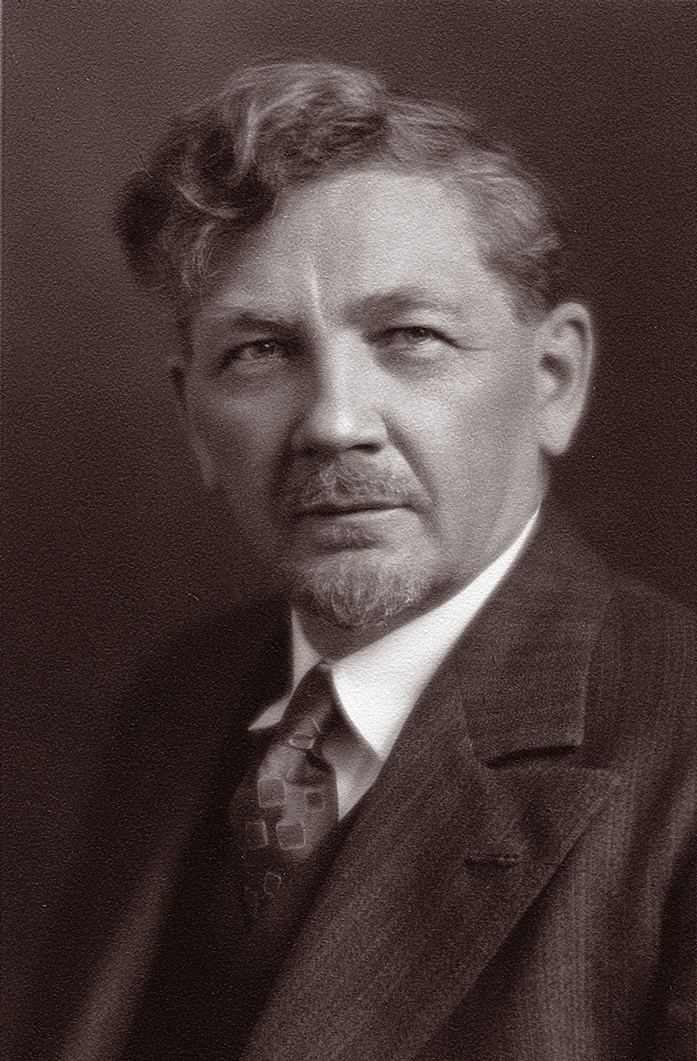 | ||
Born Timoshenko Stepan ProkopovichStepan Prokopovych TimoshenkoDecember 22, 1878Shpotivka, Russian Empire (now Sumy Oblast, Ukraine) ( 1878-12-22 ) Alma mater St.Petersburg Ways of Communication Institute Doctoral students Nicholas J. HoffJames N. GoodierEgor Popov Notable awards Louis E. Levy Medal (1944)Timoshenko Medal (1957)Elliott Cresson Medal (1958)Fellow of the Royal Society Books Theory of elasticity, Theory of elastic stability, Theory of Plates and Shells, Vibration problems in engine, History of strength of materials Similar People James N Goodier, James M Gere, Nicholas J Hoff | ||
Mi graduacion senati stephen timoshenko
Stepan Prokopovych Tymoshenko (Ukrainian: Степан Прокопович Тимошенко, Russian: Степан Прокофьевич Тимошенко; [sʲtʲɪˈpan prɐˈkofʲɪ̯ɪvʲɪt͡ɕ tʲɪmɐˈʂɛnkə]) (December 23, 1878 – May 29, 1972), was a Ukrainian and, later, an American engineer. He is considered to be the father of modern engineering mechanics. A founding member of the Ukrainian Academy of Sciences, Timoshenko wrote seminal works in the areas of engineering mechanics, elasticity and strength of materials, many of which are still widely used today. Having started his scientific career in the Russian Empire, Timoshenko emigrated to Yugoslavia during the Russian Civil War and then to the United States.
Contents
- Mi graduacion senati stephen timoshenko
- Biography
- United States
- List of Timoshenkos doctoral students in the United States
- Publications
- References
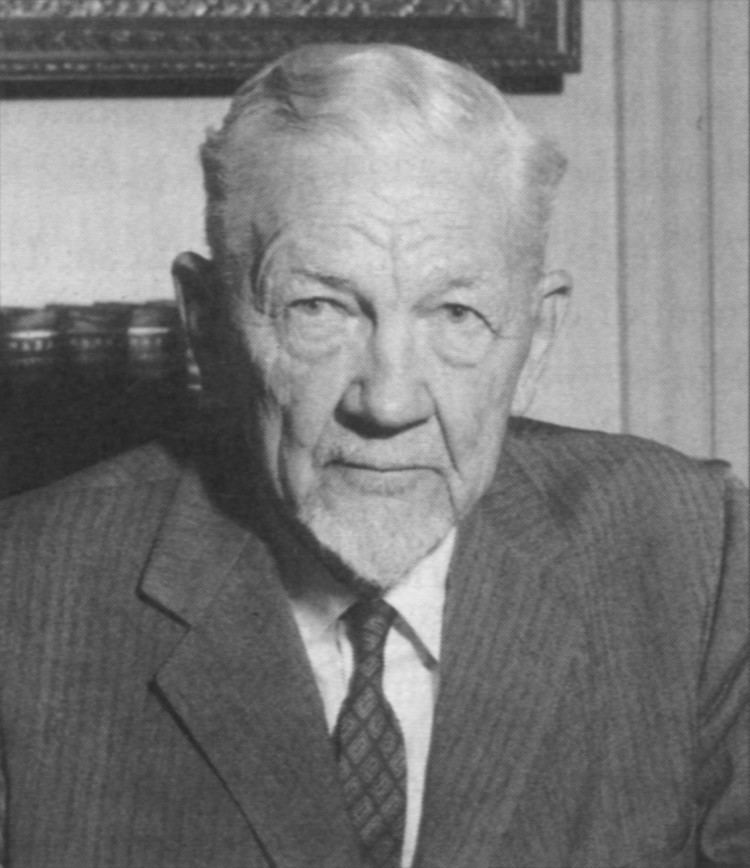
Biography
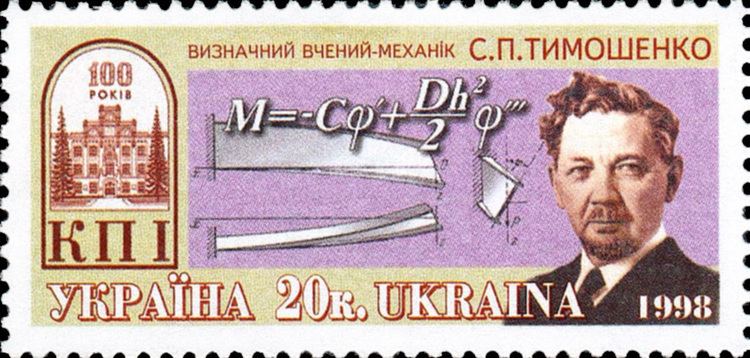
Timoshenko was born in the village of Shpotivka in the Chernigov Governorate of Ukraine. He studied at a "realnaya" school (Russian: реальное училище) in Romny, Poltava Governorate (now in Sumy Oblast) from 1889 to 1896. In Romny his schoolmate and friend was future famous semiconductor physicist Abram Ioffe. Timoshenko continued his education towards a university degree at the St Petersburg Institute of engineers Ways of Communication. After graduating in 1901, he stayed on teaching in this same institution from 1901 to 1903 and then worked at the Saint Petersburg Polytechnical Institute under Viktor Kyrpychov 1903–1906. In 1905 he was sent for one year to the University of Göttingen where he worked under Ludwig Prandtl.
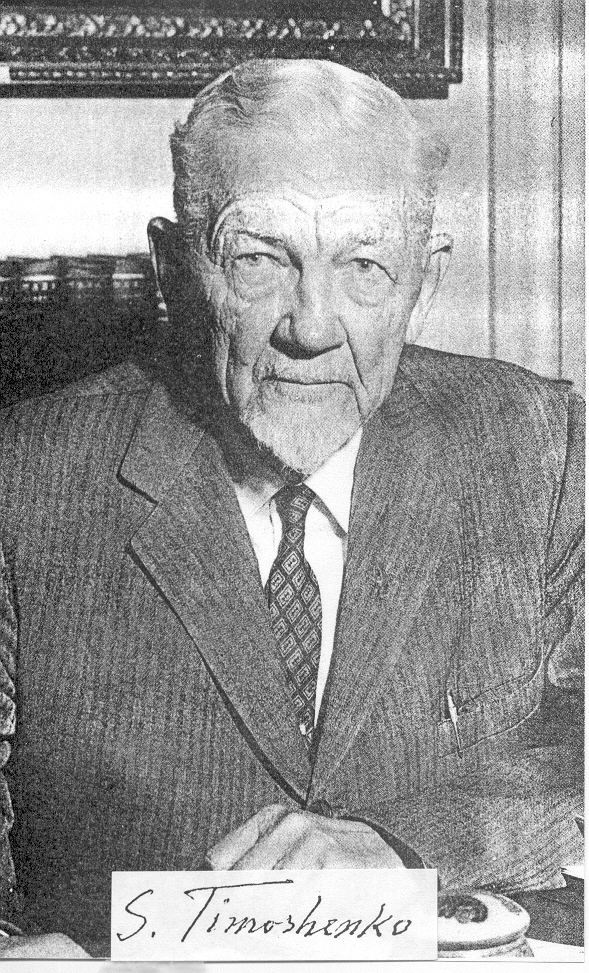
In the fall of 1906 he was appointed to the Chair of Strengths of Materials at the Kyiv Polytechnic Institute. The return to his native Ukraine turned out to be an important part of his career and also influenced his future personal life. From 1907 to 1911 as a professor at the Polytechnic Institute he did research in the earlier variant of the Finite Element Method of elastic calculations, the so-called Rayleigh method. During those years he also pioneered work on buckling, and published the first version of his famous Strength of materials textbook. He was elected dean of the Division of Structural Engineering in 1909.
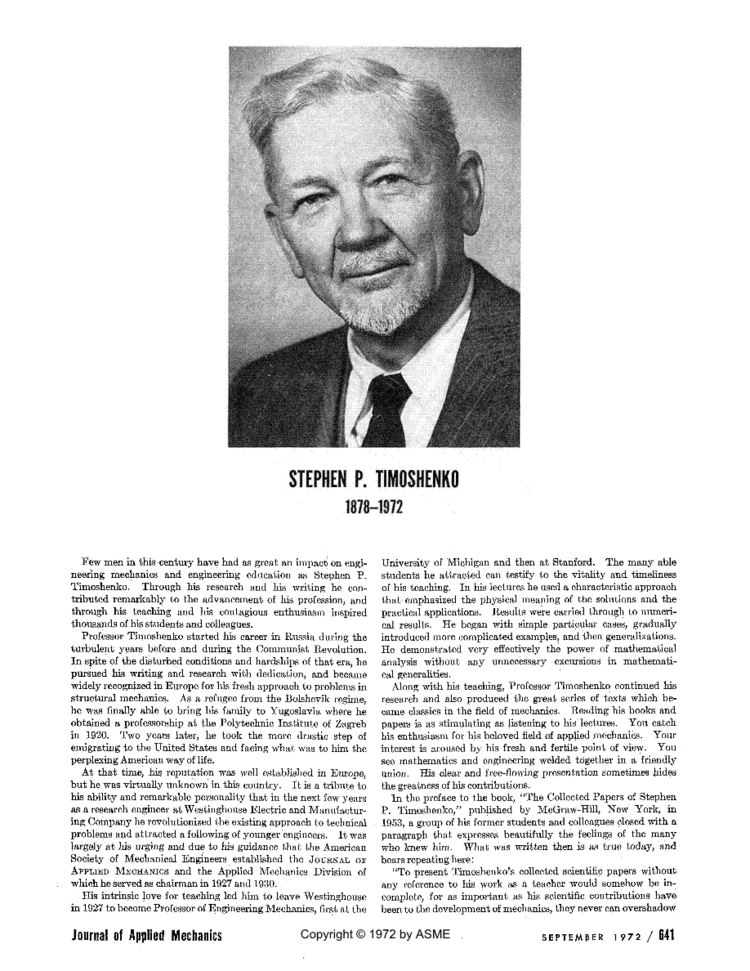
In 1911 he signed a protest against Minister for Education Kasso and was fired from the Kiev Polytechnic Institute. In 1911 he was awarded the D. I. Zhuravski prize of the St.Petersburg Ways of Communication Institute that helped him survive after losing his job. He went to St Petersburg where he worked as a lecturer and then a Professor in the Electrotechnical Institute and the St Petersburg Institute of the Railways (1911–1917). During that time he developed the theory of elasticity and the theory of beam deflection, and continued to study buckling. In 1918 he returned to Kiev and assisted Vladimir Vernadsky in establishing the Ukrainian Academy of Sciences – the oldest academy among the Soviet republics other than Russia.
After the Armed Forces of South Russia of general Denikin had taken Kiev in 1919, Timoshenko moved from Kiev to Rostov-on-Don. After travel via Novorossiysk, Crimea and Constantinople to the Kingdom of Serbs, Croats and Slovenes, he arrived in Zagreb, where he got professorship at the Zagreb Polytechnic Institute. In 1920, during the brief takeover of Kiev by the Polish army, Timoshenko travelled to Kiev, reunited with his family and returned with his family to Zagreb.
He is remembered for delivering lectures in Russian while using as many words in Croatian as he could; the students were able to understand him well.
United States
In 1922 Timoshenko moved to the United States where he worked for the Westinghouse Electric Corporation from 1923 to 1927, after which he became a faculty professor in the University of Michigan where he created the first bachelor's and doctoral programs in engineering mechanics. His textbooks have been published in 36 languages. His first textbooks and papers were written in Russian; later in his life, he published mostly in English. From 1936 onward he was a professor at Stanford University.
In 1957 ASME established a medal named after Stephen Timoshenko; he became its first recipient. The Timoshenko Medal honors Stephen P. Timoshenko as the world-renowned authority in the field of mechanical engineering and it commemorates his contributions as author and teacher. The Timoshenko Medal is given annually for distinguished contributions in applied mechanics.
In addition to his textbooks, Timoshenko wrote Engineering Education in Russia and an autobiography, As I Remember, the latter first published in Russian in 1963 with its English translation appearing in 1968.
In 1960 he moved to Wuppertal (Western Germany) to be with his daughter. He died in 1972 and his ashes are buried in Alta Mesa Memorial Park, Palo Alto, California.
